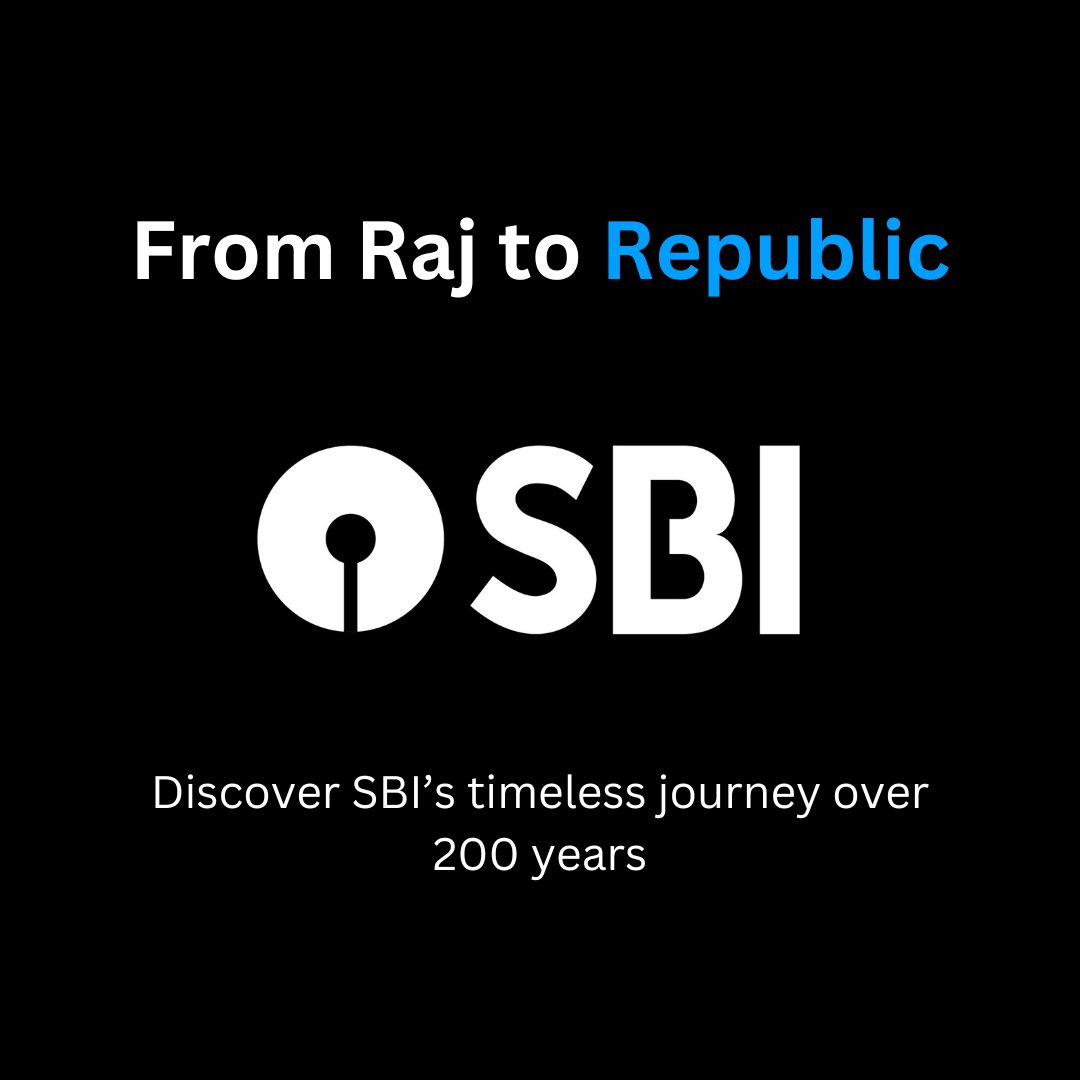We all know the State Bank of India as the largest public bank in our country. With its huge network of 22,000 branches, it caters to everyone, from the paan-wala sitting in front of your society to the rich businessmen driving the most expensive cars.
However, the little-known story of the State Bank of India, which started as a bank to ease finance for the British Crown, goes back 200 years. This story of the formation of the State Bank of India will take you to both the pre- and post-independence era, illustrating its transformation from the Raj to the Republic.
In the early 19th century, the British Crown wanted to ease the financial operations of the British East India Company. It established presidency banks to facilitate trade and the repatriation of remittances to England. These banks, such as the Bank of Calcutta (later renamed the Bank of Bengal) established in 1806, the Bank of Bombay in 1840, and the Bank of Madras in 1843, were initially set up by a royal charter from the British Crown and operated primarily in the three presidency cities of Calcutta, Bombay, and Madras.
These banks played a crucial role in managing the financial affairs of the British East India Company, including the collection of revenue, disbursement of salaries, provision of credit, and facilitation of trade transactions.
Later, during World War 1 (1914 to 1919), a majority of banks started falling across the globe, which also impacted the Indian Banks. 83 out of 1100 failed during the war years. This was a signal for the great depression that was to come. Thus to withstand the storm, the British Crown, in 1921, merged all three presidency banks into one entity, giving rise to the Imperial Bank of India.
Back then, the Imperial Bank of India held the status of a quasi-central bank, and it took on the triple role of a commercial bank, a banker’s bank, and a banker to the government. In fact, it also took over some overseas roles which were previously played by the Bank of England and the India Office, a British department established in London. It continued serving as the quasi-central bank until the Reserve Bank of India (RBI) was established in 1935 under the British Charter.
From 1921 to 1947, until we gained independence, the Imperial Bank became a prominent commercial bank in the nation with a network of 172 branches and over 200 sub-offices spread across the country.
After our Independence in 1947, the government of India realized that if we have to grow as a nation, we have to focus on the development of rural India as our highest priority. Until that time, the Imperial Bank of India and a few other commercial banks were more inclined towards the urban sector and were ill-equipped for this rising economic need.
In 1955, the Reserve Bank of India acquired a 60% controlling stake in the Imperial Bank, transforming it into a state-partnered and state-sponsored bank. It was called the State Bank of India (SBI). Later, in 1959, the State Bank of India took over eight former state-associated banks as its subsidiaries and grew to 480 offices comprising branches, sub-offices, and three local head offices inherited from the Imperial Bank of India.
The State Bank of India was born with a new sense of social purpose.
In a significant move in late 2008, the Government of India acquired the Reserve Bank of India's stake in SBI. This action aimed to mitigate any potential conflicts of interest, recognizing the RBI's role as the country's banking regulatory authority.
Throughout its illustrious 200-year journey, the State Bank of India has played a pivotal role in shaping India's economic trajectory. From spearheading the Industrial Revolution in the 1960s to supporting the Green Revolution in the 1970s, SBI has consistently provided crucial financial assistance and guidance, contributing significantly to the nation's development.
In 2022, SBI made a significant leap by inaugurating its first dedicated branch for startups in Bengaluru. This initiative marked a new era of support for India's entrepreneurial ecosystem, empowering aspiring entrepreneurs with resources and guidance to thrive in the competitive business landscape.
Even with its growth through mergers and acquisitions, absorbing over twenty banks along the way, SBI maintains a steadfast commitment to community and environmental welfare. Initiatives like the SBI Green Fund underscore its dedication to sustainable development, focusing on key areas such as tree plantation, water security, waste management, and clean energy.
Today, SBI stands as a beacon of innovation and reliability in the Indian banking sector, from being the largest issuer of debit cards to spearheading UPI transactions.
And that is how the State Bank of India is continuing to lead the way, serving millions with unwavering trust and excellence.
References
- https://rbidocs.rbi.org.in/rdocs/content/PDFs/90028.pdf
- https://en.wikipedia.org/wiki/List_of_banks_that_have_merged_to_form_the_State_Bank_of_India
- https://en.wikipedia.org/wiki/Imperial_Bank_of_India
- https://rbi.org.in/Scripts/pm_earlyissues.aspx
- https://sbi.co.in/web/sbi-am/museum
- https://books.google.co.in/books?id=6sknWQvz3MIC&printsec=frontcover&source=gbs_ge_summary_r&cad=0#v=onepage&q&f=false
- https://www.ixambee.com/blog/introduction-to-state-bank-of-india-sbi-all-you-need-to-know-about-sbi
- https://www.livemint.com/news/india/bengaluru-sbi-launches-its-first-dedicated-branch-for-start-ups-details-here-11660656591291.html
- https://splessons.com/lesson/state-bank-of-india-introduction/
- https://startuptalky.com/sbi-success-story/
- https://www.jstor.org/stable/4378608
